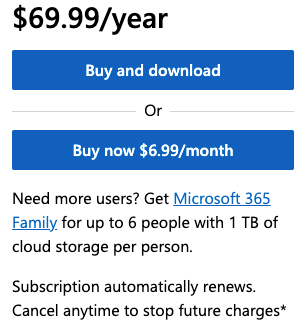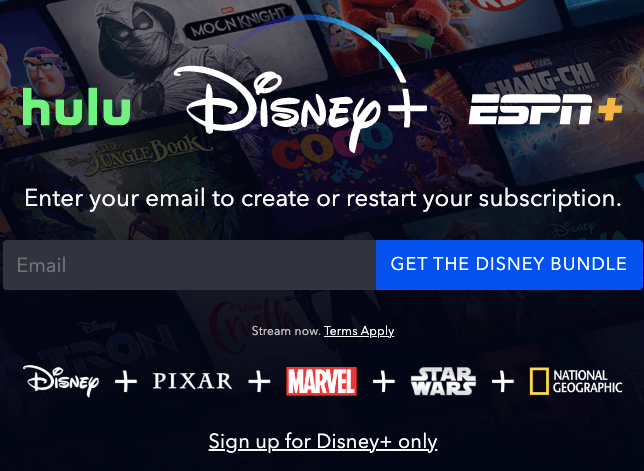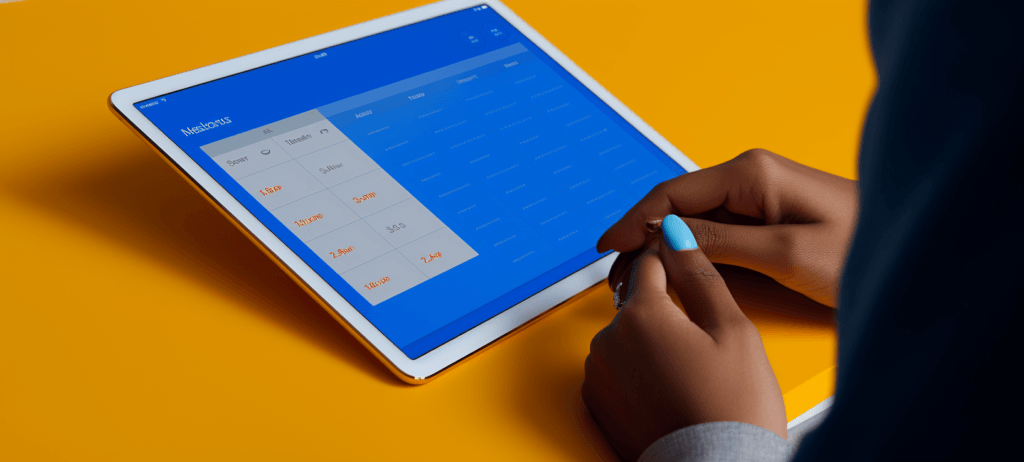-
 Published: Jul 8, 2022
Published: Jul 8, 2022
-
 8 min. read
8 min. read
-
 Kayla Johansen
Kayla Johansen Content Writer
Content Writer
- Kayla is a content specialist with a B.S. in marketing. She is certified in Google Analytics and Google Ads Search and Display. When not writing, she enjoys reading, playing with her dog, and baking.
Once someone decides to buy from you, you stand in a prime spot to provide value to this new customer. They’ve already found your business, considered your offering, and decided to pick you over the competition.
While they’re in contact with you, why not try to sell them other products they might love? To do so, you’ll upsell or cross-sell to these customers.
You might have heard those terms floating around, but do you know the difference between an upsell vs. cross-sell?
Both upselling and cross-selling are marketing tactics that convince shoppers to purchase something they hadn’t planned to buy to increase average order value (AOV). Upselling promotes a higher-end version of the same product, while cross-selling tries to sell complementary products.
Ready to learn more about these tactics and how to use them for your business? Keep reading for a comparison of an upsell vs. cross-sell and five ways you can upsell and cross-sell to your customers.
While you’re here, do you want more marketing advice delivered straight to your inbox? Subscribe to Revenue Weekly for marketing tips from the experts at WebFX!
What is upselling?
Upselling promotes an upgraded or higher-value product version to a customer. If someone attempts to purchase a basic product model and you show them the perks of a more advanced version of that product, that’s upselling.
Take a movie theater. You might walk up to the box office to purchase tickets in the standard theater, but maybe they offer an upgraded theater with larger seats and a more immersive experience.
The theater might try to sell you these upgraded tickets instead. If you switch your tickets, they’ve successfully upsold you.
In this example, you didn’t end up with any additional products besides the movie tickets you planned to buy in the first place. You still have those tickets, but you received an upgrade that generated a higher order value for the movie theater and more value for you.
What is cross-selling?
On the other hand, cross-selling promotes additional products that supplement the product the customer intends to buy. A successful cross-sell results in the customer purchasing the original product and one or more complementary products.
Let’s return to the movie theater example. As you buy your tickets, the theater might try to sell you a reusable popcorn bucket and drink cup. If you purchase these items alongside your tickets, they’ve successfully cross-sold to you.
Unlike the upselling example, your original tickets didn’t change, but you did end up with additional products. These complementary products still provide value — now you can enjoy your movie with a buttery batch of popcorn and a fountain drink!
Upsell vs. cross-sell
As you can see, upselling and cross-selling are similar tactics that complement each other. They both seek to improve the original intended purchase to bring more value to the customer and revenue for the business.
By increasing your AOV, upselling and cross-selling help you make a higher profit without acquiring additional customers. Customer acquisition costs substantially more than marketing to existing customers, so these tactics can markedly improve your return on investment (ROI).
The difference between an upsell vs. cross-sell lies in how you improve the intended purchase for a more significant ROI.
The same business can use both tactics, and each carries similar benefits for your company. Choose when to use each based on the customer’s needs and your business model.
For example, if a customer is in the early decision-making stages of buying a laptop, the supplier could attempt to upsell by showing them the perks of a higher-end device.
But suppose the customer has already spent substantial time comparing the supplier’s laptops and chosen one. In that case, it might be more strategic to cross-sell supplemental products like a laptop stand or wireless mouse.
How to cross-sell and upsell to your customers
The key to upselling and cross-selling successfully is to provide more value to your customer. For best results, you’ll want to use customer data and contextual information to personalize your offer. Your prospects are more likely to opt for the upsell or cross-sell if you show them products that matter to them.
With that in mind, let’s explore how to cross-sell and upsell to your customers with five tactics!
1. Post-purchase communication
Once someone has purchased from you, you may keep in touch with them through email marketing or other forms of communication. Use these post-purchase communications to market similar or upgraded products.
For example, Canva highlighted a new feature of Canva Pro in a customer email.

I use the free version, so if I wanted this feature, I might find value in upgrading to Canva Pro after seeing this email.
As you upsell or cross-sell with these post-purchase communications, ensure you prioritize value and don’t hark new products too often. You don’t want your customers to view your emails as spammy and stop reading them.
2. Product pages
You can also upsell and cross-sell before the customer completes a purchase. For ecommerce stores, your product pages create prime upselling and cross-selling opportunities.
For example, when you browse a product page for an iPhone, Apple shows you complementary products that you might need or want for your new phone — cases and AirTags.

You can also upsell on your product pages. When I browsed the Microsoft store and viewed the product page for Microsoft 365 for personal use, the company reminded me that I could upgrade to a family version of the product if I needed the extra storage.

3. Sign-up pages
Like product pages, sign-up pages also present viable opportunities for upselling and cross-selling. When I visit the Disney+ homepage to sign up for the platform, the company offers its bundle with Hulu and ESPN+.

They’re offering me supplemental products I might enjoy with a bundled discount to sweeten the offer.
Other subscription services might use their signup pages to upsell prospects. For example, many streaming or OTT platforms include a lower-cost ad-supported tier and ad-free tiers that cost more. These platforms might showcase the value of the higher levels to upsell a visitor signing up for the ad-supported tier.
4. Sales conversation
Another way to upsell and cross-sell while a customer is considering a purchase is through the sales conversation. This option could work well for business-to-business (B2B) companies selling higher-investment products or services.
For example, you might sell a comprehensive software package with a basic and more advanced tier. The prospect might lean towards the base option, but while your sales team speaks with them, they could emphasize the benefits of the more advanced package.
If they succeed, that’s a successful upsell complete!
5. Personalized recommendations
Personalization works wonders for your marketing strategy, and cross-selling is no exception. If someone previously shopped with you, consider using their past interactions to send them personalized recommendations for products they might like.
Amazon does an excellent job with this ecommerce personalization tactic. They personalize your browsing experience on the site and send you curated recommendations based on your browsing and purchase history.

These recommendations showcase products the customer might not have known about before, and if you personalize them well, the customer will see their value. They’ll appreciate the seamless experience you offer them — and you continuously sell additional products in the process!
Learn more ways to elevate your marketing strategy with our free guides
Upselling and cross-selling are excellent tactics to grow your ROI. If you want to learn more ways digital marketing boosts your ROI, check out our library of free guides.
We’ve covered everything from search engine optimization (SEO) and web design to social media and B2B marketing. We’ll show you the ins and outs of growing your business online so you can draw in more prospects.
The more customers you have shopping for your products, the larger the opportunity for upselling and cross-selling. Browse the guides and learn new ways to grow your business today!
-
 Kayla is a content specialist with a B.S. in marketing. She is certified in Google Analytics and Google Ads Search and Display. When not writing, she enjoys reading, playing with her dog, and baking.
Kayla is a content specialist with a B.S. in marketing. She is certified in Google Analytics and Google Ads Search and Display. When not writing, she enjoys reading, playing with her dog, and baking. -

WebFX is a full-service marketing agency with 1,100+ client reviews and a 4.9-star rating on Clutch! Find out how our expert team and revenue-accelerating tech can drive results for you! Learn more
Try our free Marketing Calculator
Craft a tailored online marketing strategy! Utilize our free Internet marketing calculator for a custom plan based on your location, reach, timeframe, and budget.
Plan Your Marketing Budget

Maximize Your Marketing ROI
Claim your free eBook packed with proven strategies to boost your marketing efforts.
Get the GuideTry our free Marketing Calculator
Craft a tailored online marketing strategy! Utilize our free Internet marketing calculator for a custom plan based on your location, reach, timeframe, and budget.
Plan Your Marketing Budget





